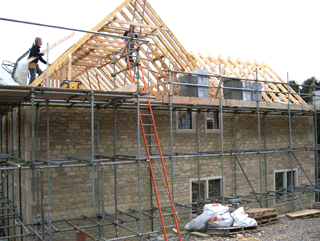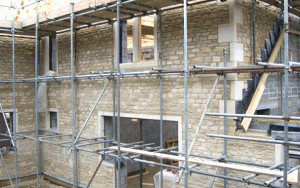Budget
 Your first, and probably biggest, consideration when it comes to planning your building project will be deciding how much money you want to spend. Work should be done in one go. You’ll save time and money, and there will be less disruption if all the plumbing, electrical work, plastering and so on is completed as one job rather than piecemeal. Ideally, you should get three quotes for each trade, and take up references by speaking to previous customers and, if possible, having a look at the work. Don’t employ people on a day rate as you won’t be able to control your budget, and be extremely wary of anyone who asks for total payment up front.
Your first, and probably biggest, consideration when it comes to planning your building project will be deciding how much money you want to spend. Work should be done in one go. You’ll save time and money, and there will be less disruption if all the plumbing, electrical work, plastering and so on is completed as one job rather than piecemeal. Ideally, you should get three quotes for each trade, and take up references by speaking to previous customers and, if possible, having a look at the work. Don’t employ people on a day rate as you won’t be able to control your budget, and be extremely wary of anyone who asks for total payment up front.
Planning Permission
 You can apply for planning permission to build anything you like, although it may very well not be granted, or if you want to make more minor changes without planning permission you can opt for a permitted development. It depends on where you live – and conservation and listed buildings are obviously bound by different rules – but generally extensions, loft conversions and conservatories can all be permitted developments providing:
You can apply for planning permission to build anything you like, although it may very well not be granted, or if you want to make more minor changes without planning permission you can opt for a permitted development. It depends on where you live – and conservation and listed buildings are obviously bound by different rules – but generally extensions, loft conversions and conservatories can all be permitted developments providing:
• Extensions and other buildings don’t exceed 50% of the total area around the house as it stood on 1 July 1948, or the day it was built if later.
• The extension isn’t on the side of the house facing the road.
• On a detached house a single-storey extension can be up to 8m long and side extensions can only be a single storey.
• On a terraced or semi, a single-storey extension can be up to 6m long.
• The building must not be clad in any outlandish material – if you want to do something that doesn’t match your house you will need to get the council’s permission.
• Single-storey extensions must not exceed 4m in height.
• Two-storey extensions can only be 3m long.
For more information visit the Government’s Planning Permission pages
Building Regulations
You also need to be aware of Building Regulations, which cover areas such as structure, fire safety, ventilation, hygiene, drainage and waste, access to the building, energy conservation, electrical safety, and so on. If an extension doesn’t meet them a council can ask for it to be taken down. If you are employing a builder to do your work make sure you confirm they are taking responsibility for meeting the rules, but remember that it’s still important for you to know what’s required because as the building owner you’ll be putting things right if there’s a problem.
Neighbour Consultation Scheme
If you want to take advantage of the relaxed extension rules (extend over 4m on a detached property, or over 3m on a terraced or semi-detached home) you will also have to comply with the Government’s Neighbour Consultation Scheme, which involves submitting a description of the proposal, the plans, your neighbours’ addresses and your developer’s contact details to your local planning authority. It will then serve a notice on your neighbours, giving them the opportunity to raise any concerns. It’s also worth noting that if you are building within 3m of your neighbour’s property you will need a Party Wall Agreement in place as well.
The Government’s Planning Portal has guides on common projects. It also suggests contacting your local planning authority, either Wiltshire or Bath, to discuss your proposal before any work begins. They will be able to inform you of any reason why the development may not be permitted and if you need to apply for planning permission for all or part of the work.